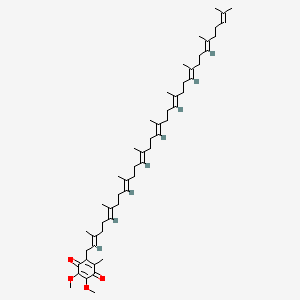| Authors | Title | Published | Journal | PubMed Link |
|---|---|---|---|---|
| Jové M et al. | Specific lipidome signatures in central nervous system from methionine-restricted mice. | 2013 | J. Proteome Res. | pmid:23590626 |
| Wang QM et al. | Bensingtonia rectispora sp. nov. and Bensingtonia bomiensis sp. nov., ballistoconidium-forming yeast species from Tibetan plant leaves. | 2012 | Int. J. Syst. Evol. Microbiol. | pmid:22081720 |
| Nishi K et al. | Hypothermia reduces resuscitation fluid volumes required to maintain blood pressure in a rat hemorrhagic shock model. | 2012 | J Trauma Acute Care Surg | pmid:21768895 |
| Bravo E et al. | Coenzyme Q metabolism is disturbed in high fat diet-induced non-alcoholic fatty liver disease in rats. | 2012 | Int J Mol Sci | pmid:22408414 |
| Malhotra J et al. | Acinetobacter indicus sp. nov., isolated from a hexachlorocyclohexane dump site. | 2012 | Int. J. Syst. Evol. Microbiol. | pmid:22247213 |
| Luque R et al. | Halomonas ramblicola sp. nov., a moderately halophilic bacterium from Rambla Salada, a Mediterranean hypersaline rambla. | 2012 | Int. J. Syst. Evol. Microbiol. | pmid:22247215 |
| Gomez F et al. | Restoring de novo coenzyme Q biosynthesis in Caenorhabditis elegans coq-3 mutants yields profound rescue compared to exogenous coenzyme Q supplementation. | 2012 | Gene | pmid:22735617 |
| Ducluzeau AL et al. | Gene network reconstruction identifies the authentic trans-prenyl diphosphate synthase that makes the solanesyl moiety of ubiquinone-9 in Arabidopsis. | 2012 | Plant J. | pmid:21950843 |
| Lapointe J et al. | The submitochondrial distribution of ubiquinone affects respiration in long-lived Mclk1+/- mice. | 2012 | J. Cell Biol. | pmid:23045551 |
| Hahn SH et al. | Assay to measure oxidized and reduced forms of CoQ by LC-MS/MS. | 2012 | Methods Mol. Biol. | pmid:22215547 |
Coenzyme Q9
Coenzyme q9 is a lipid of Prenol Lipids (PR) class. The involved functions are known as Diastasis, Phosphorylation and Cardiac function.
Cross Reference
Introduction
To understand associated biological information of Coenzyme Q9, we collected biological information of abnormalities, associated pathways, cellular/molecular locations, biological functions, related genes/proteins, lipids and common seen animal/experimental models with organized paragraphs from literatures.
What diseases are associated with Coenzyme Q9?
There are no associated biomedical information in the current reference collection.
No disease MeSH terms mapped to the current reference collection.
PubChem Associated disorders and diseases
What pathways are associated with Coenzyme Q9
There are no associated biomedical information in the current reference collection.
PubChem Biomolecular Interactions and Pathways
Link to PubChem Biomolecular Interactions and PathwaysWhat cellular locations are associated with Coenzyme Q9?
There are no associated biomedical information in the current reference collection.
What functions are associated with Coenzyme Q9?
Related references are published most in these journals:
| Function | Cross reference | Weighted score | Related literatures |
|---|
What lipids are associated with Coenzyme Q9?
There are no associated biomedical information in the current reference collection.
What genes are associated with Coenzyme Q9?
There are no associated biomedical information in the current reference collection.
What common seen animal models are associated with Coenzyme Q9?
There are no associated biomedical information in the current reference collection.
